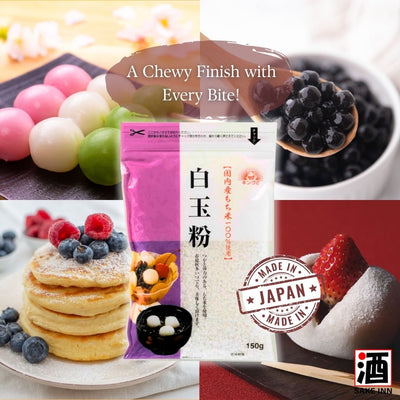Sake Guide: How To Warm Sake

Always wanted to heat up your sake but don't know how? Some of you might have already known that Japanese sake can be a very versatile drink. You can serve sake at varying temperatures, some are best served chilled, whereas some would taste better warmed. In this post, we are going to give you a better understanding of the different temperatures of serving various types of sake.
Basics
 Traditionally, sake is served warm but due to advancement in sake brewing technology, certain sake flavour profiles can be destroyed by heat and hence drinking it chilled or at room temperature would be more ideal. Therefore, there is a general rule on the best temperature to serve certain classifications of sake as seen below.
Traditionally, sake is served warm but due to advancement in sake brewing technology, certain sake flavour profiles can be destroyed by heat and hence drinking it chilled or at room temperature would be more ideal. Therefore, there is a general rule on the best temperature to serve certain classifications of sake as seen below.
Junmai Ginjyos & Junmai Daiginjyos, Daiginjyos: Best served chilled due to the delicate, fragrant, and elegant flavour profiles. By heating these sakes, it would destroy the flavours and fragrances the brewery has worked so hard for.
Tokubetsu Junmai and Ginjyos: Can be served at room temperature or chilled.
Futushu: Good all at temperatures, however, the recommended serving suggestion would be either room temperature or warmed. Most restaurants in Japan that serve warm/hot sake would serve futushu, or also known as table sake.
This is just a general guide, there is still plenty of good sake, premium ginjyos, and an occasional daiginjyo, that can be slightly warmed to bring out certain aroma and flavour. However, it is important to note that different sake will appeal to different people at different temperatures. What appeals to you the most would be the best temperature for you.
How to Heat Up Sake

Warm sake using a water bath
1) Pour sake into tokkuri (sake instrument for holding sake).
2) Add water into a pot and ensure that the water level in the pot is levelled or higher than the sake level in the tokkuri.
3) Turn on heat for the pot, and gradually heat up the water. Do not use high heat.
4) Monitor the temperature using a kitchen thermometer to ensure that you do not overheat your sake.

Warm Sake using a Hot Sake Pot
1) Pour desired sake into inner pot (left).
2) Pour hot water into main ceramic pot (centre).
3) Place inner pot into the main ceramic pot, and use the choko cup (right) to cover the inner pot.
4) Wait till sake in the inner pot is to your desired temperature, if not, change the hot water in the main ceramic pot and wait a little longer.

Warm Sake using a Microwave
1) Pour sake into tokkuri.
2) Cover tokkuri with a microwaveable plastic wrap or anything that would be able to fully cover the opening of the tokkuri.
3) Microwave in batches (15s each on low) till the sake is heated to the temperature of your liking.
4) Do not microwave for too long or it will destroy the flavour profile of the sake.
Do note that some people may say warming sake using a microwave is not ideal, as there is a higher chance that you may overheat your sake. We would advise you to use a water bath or with a hot sake pot instead if you are not familiar with warming your sake in a microwave.
Sake Recommendations
Ginrei Gassan Junmai Sake

The Ginrei Gassan Junmai Sake has a rich aroma. Its soft, smooth flavour of rice ends with a pleasant clean finish. The sake is best served either hot, to bring out its sharpened aromas, or chilled, if you prefer more subtle flavours. Like other Ginrei Gassan labels, this sake is easy to drink with any dish or cuisine.
Recommended serving temperature: Chilled or warm
Taste: Light & slightly dry
Rice polishing rate: 70%
Food pairing: Sashimi, tempura
Ozeki Karatamba Honjyozo Sake

Ozeki Karatamba Honjyozo Sake is the masterpiece of the Tamba Toji (brewmaster). Their unique brewing method and technique produce this superb, dry and crisp sake. Ozeki Karatamba has a full-bodied, rich taste that feels smooth on the palate. This is the perfect sake to indulge yourself!
Recommended serving temperature: Chilled, room temperature, 5-10 ℃ and 40-45 ℃
Taste: Dry & Smooth
Rice polishing rate: 70%
Food pairing: Spicy dishes (e.g. buffalo wings), grilled salmon, fried food
Kiku-Masamune Kasen Honjyozo Sake

Authentically dry Kiku-Masamune Kasen Honjyozo Sake has a refreshing and rich flavour that is free of impurities. It has a clean, crisp finish that leaves you wanting more. Not to mention, Kiku-Masamune has switched to using the traditional Kimoto method for brewing since September 2009. Refining this exceptional label to perfect a balanced taste and powerful, crisp finish. It has been in the market for more than 30 years and is considered one of the most famous sakes in Singapore.
Recommended serving temperature: Chilled, Room temperature and 40-50 ℃
Taste: Dry & light
Rice polishing rate: Unspecified
Food pairing: Heavy dishes (e.g. stew, cream pasta), fried fish
━━━━
Do note that heating sake at very high temperatures (especially higher than those recommended) would harm the flavours cultivated by the master toji and the sake brewery. That said, don't be afraid to try something different. You could find something new that you will enjoy even more. Let us know in the comments below if you have any sake questions about drinking your own hot sake. Kanpai!




















Leave a comment